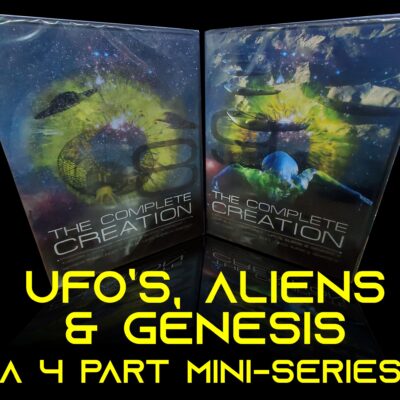This was in direct response to my quick critique of five specific intermediate fossils. The sources I brought up were Discover, National Geographic, and Time to name a few.
Specifically, TDG’s main criticism was that none of these were peer reviewed journals.
TDG clearly knew his stuff and clearly was good at debating. He did not question any of my detractions, (presumably because he was well aware my detractions were correct and he could not answer them) but instead called question to my sources – redirecting attention away from my arguments.
This is perfectly acceptable to me, and he certainly has every right to question my actions. It’s only fair to suggest that perhaps (deliberately or not) I specifically chose claims that were easy to debunk and poke fun at, so as to make evolution look bad. It is fair to suggest I did this rather than answering the far more serious claims and evidence presented in peer-reviewed journals.
My response:
I was going to respond, but got interrupted in the fray of discussion and another question that came up. One point I already made during Q & A:
These magazines paint a powerful picture of evolutionary evidence – whether the evolutionary community accepts these interpretations or not is irrelevant. I deal with the general lay public who is literally overwhelmed and brainwashed with these claims. I am answering these claims; carefully, specifically.
Furthermore, in general, these magazines are also merely popularizing what the peer-reviewed journals are claiming! They are merely “dumbing down” the claims and explaining them in layman’s terms.
I am happy to provide references for any information that I bring up. There were several points throughout the evening where I did cite from specific, peer-reviewed journals, but it is true that none of the information I addressed with regards to intermediates happened to be from peer reviewed journals.
In the middle of addressing the intermediates, TDG shouted a question from the back of the room. Unfortunately, due to the music still being played right behind me, it was very difficult to hear. What I thought I heard was something along the lines of “What about the miniature horse?” However, as I tossed it over in my head the next day, he may have been asking about the recent “Hobbit” discovery. I do not know what he asked, so I will address these two in hopes that it was one of them.
The “miniature horse.”
If this was indeed his question, it was presumably about Hyracotherium, aka Eohippus – the “dawn horse.” Interestingly, I was given a hot tip a couple of years back about possible Hyracotherium running around the Grand Canyon. I tried to mount an expedition there to go check it out, but my transmission blew in Colorado Springs on the way there. I haven’t made it back since.
Sadly, I do not have a drawing I can reproduce on my website, but there’s plenty around like this one. You can quickly see why some would conclude it was related to the horse. This “evidence” falls squarely into the category of homologies which I answered in brief on the proof of Creation webpage.
A number of Creationists have claimed the Hyracotherium is represented by the modern bay Hyrax. Talk Origins has a well done page documenting this, and conveniently provide skull examples of both Hyracotherium and the Hyrax. Interestingly, the CRSQ article they mention actually is simply citing N. Heribert Nilsson – a man who spent his entire life believing and teaching evolution. After forty years of devotion to this theory, guess what he wrote?
“My attempts to demonstrate evolution by an experiment carried on for more than 40 years have completely failed.”…. among other things!
It was Nilsson who debunked the Hyracotherium arguments and the evolution of the horse – in fact, it is not difficult to find evolutionists who don’t buy the supposed “evolution of the horse” sequence. (Quotes run rampant on the internet, I won’t bother reinventing the wheel).
Anyone who was attended my talks has seen the CAT-scan images of a number of dog skeletons, including skulls of the bulldog and borzoi – two different dogs with radically different skulls! Head on over to the Bone Clones website and compare the variations between dog skulls for yourself!
English Bulldog: http://www.boneclones.com/BC-128.htm
Airdale: http://www.boneclones.com/BC-022.htm
Great Dane: http://www.boneclones.com/BC-127.htm
(Man, these are nice – I’m going to have to get some of these!)
These are all dogs and unfortunately one thing you can’t grasp looking at these photos is the size difference as well.
Now take a look at the two skulls presented on the Talkorigins page and quickly realize why creationists and at least one evolutionist have all said Hyracotherium is probably just the Hyrax. The variation with the skeleton is well within the boundaries comparable to that of all the species of dogs.
The “Hobbits”
This is in reference to a recent, intriguing finding in Inodonesia last year of apparently human skeletal remains of humans about 1 meter tall! You can quickly see why it was nicknamed after Tolkein’s race in the “Lord of the Rings” series.
Again, partly because I simply have not had the time to follow this in detail, and to avoid reinventing the wheel, I would merely refer to Answers In Genesis’ three articles on the subject, as they have done an excellent job:
The first preliminary report: http://www.answersingenesis.org/docs2004/1028dwarf.asp
The second (more interesting) follow up: http://www.answersingenesis.org/docs2004/1108hobbit.asp
The most recent debate: http://www.answersingenesis.org/docs2005/0228hobbit_war.asp
In brief, there appears to be nothing inhuman about these skeletons, other than their size which is still well within the genetic variation of humans and has nothing to do with evolution per se. A human (even a small one) is still a human, which had to have come from a human.




Trackbacks/Pingbacks